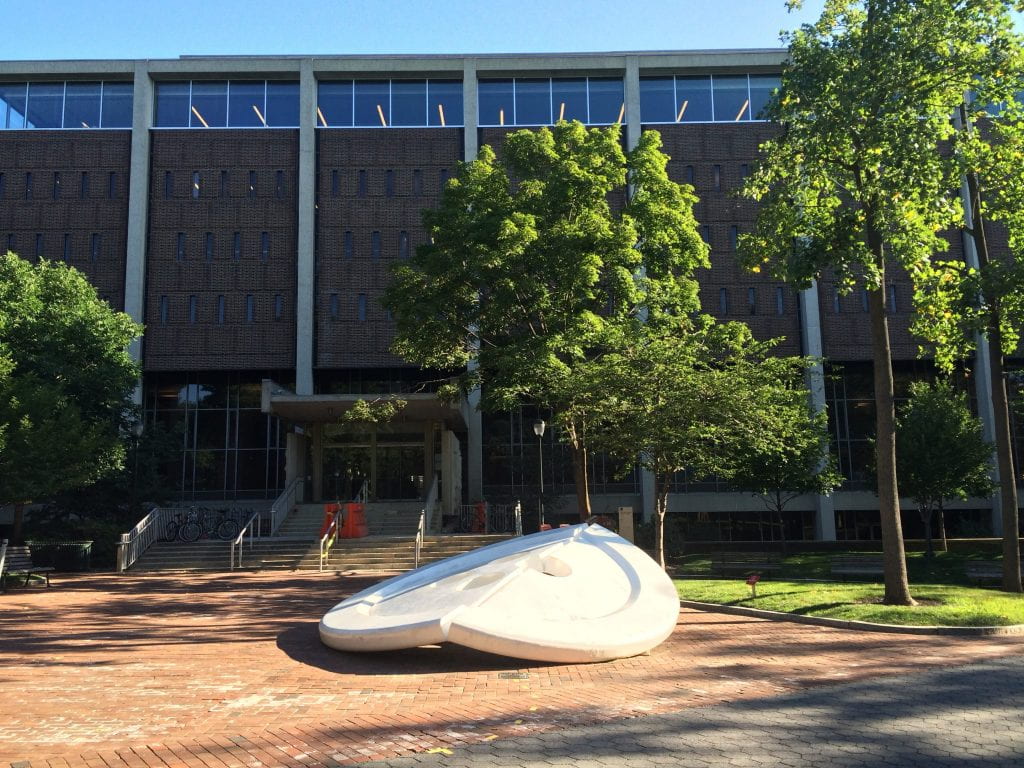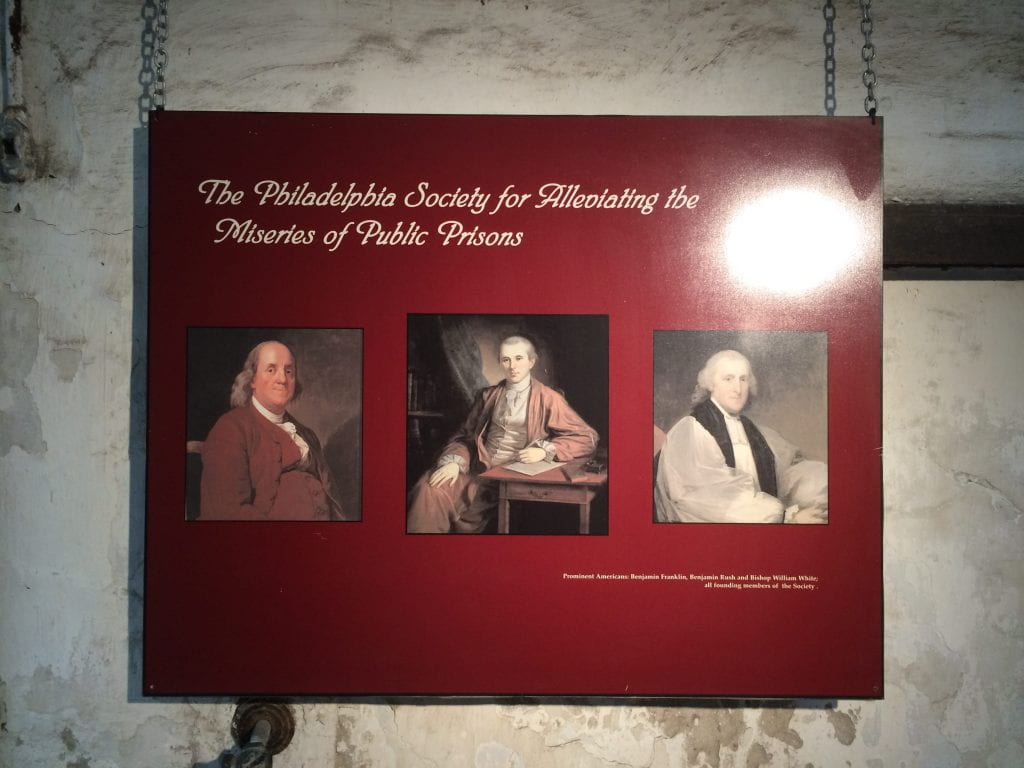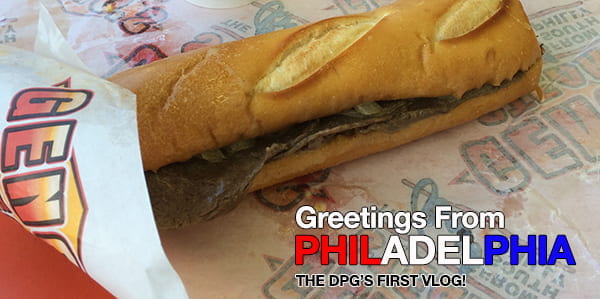 When I use the phrase “digital humanities,” what comes to mind? Humans using machines to analyze what makes us human? Machines pretending to be humans? A T-800 model Terminator quoting Shakespeare?
When I use the phrase “digital humanities,” what comes to mind? Humans using machines to analyze what makes us human? Machines pretending to be humans? A T-800 model Terminator quoting Shakespeare?
Turns out, it’s a trick question, because no one really agrees on what “digital humanities” means for sure.
That’s a big takeaway I got from a three-day conference on digital humanities (DH) held at the University of Pennsylvania last week. But the Keystone Digital Humanities Conference wasn’t just an opportunity for me to refine my ambiguity detection skills; it was actually a great opportunity to present not once but twice to a room full of humanists, librarians, archivists, scholars and generally intelligent people.
For this particular trip – my first to Philadelphia, as it turns out – I decided to capture some of my thoughts and experiences on video and to share them here in this blog post. Yes, friends: I have crossed into VLOGGING. Can viral fame be far behind? (Spoiler alert: Yes, it can, and should be.)
My first video observation actually addresses something that happened while my plane was on the tarmac at DFW International Airport, and it involves one of the most divisive subjects of our time: selfie sticks.
I know I’m treading dangerously close to “old man yells at cloud” territory here, but for real? You need that many versions of three people sitting on a plane, seen from an elevated angle? Oh, and they took more selfies in front of the baggage carousel.
 But it actually ties in with one of the recurring themes of the conference, as it would turn out: documenting our human experience and using digital tools to tell the story of who we are as human beings. Which begs the question: what are the digital humanities, anyway?
But it actually ties in with one of the recurring themes of the conference, as it would turn out: documenting our human experience and using digital tools to tell the story of who we are as human beings. Which begs the question: what are the digital humanities, anyway?
Oh, the (Digital) Humanities!
For a quick definition of DH, let’s turn to our good friend Wikipedia:
Digital humanities is an area of research and teaching at the intersection of computing and the disciplines of the humanities. Developing from the fields of humanities computing, humanistic computing,[2] and digital humanities praxis ([3]) digital humanities embraces a variety of topics, from curating online collections to data mining large cultural data sets. Digital humanities (often abbreviated DH) currently incorporates both digitized and born-digital materials and combines the methodologies from traditional humanities disciplines (such as history, philosophy, linguistics, literature, art, archaeology, music, and cultural studies) and social sciences [4] with tools provided by computing (such as data visualisation, information retrieval, data mining, statistics, text mining, digital mapping), and digital publishing.
That’s a lot to wrap one’s head around! I think of it this way: we’re using computers and computerized data to mine, examine, interpret and provide access to centuries of human intellectual output. Per the definition above, we most fully “do” digital humanities at the Digital Projects Group (DPG) by providing access to large sets of data formatted as digital collections. For every project we put online, there are numerous avenues for scholars and humanists to take the collections, evaluate them, look for patterns and, perhaps, see something new and exciting in the process.
I’ll be honest at this point and say that there were some super intelligent – almost scary smart – people at this conference, and that made the whole “presenting on things you do for work” thing more intimidating than I had anticipated. I mean, these are people who use words like “legomenology” and “praxis” in casual conversation. What might they think about our Black Gospel Music Restoration Project or my work managing our social media a the DPG? Most of them have probably only ever heard of Baylor in terms of our famous president/amazing riverside stadium, right?
Those questions would be asked over the course of three days at the beautiful Kislak Center for Special Collections, Rare Books and Manuscripts on the Penn campus, housed in the Van Pelt Library. If you’re wondering how to find that library, just look for the giant broken button on the sidewalk outside. Behold!
Want a closer look at that button? Here ya go!
Most of the sessions took place in a really cool space in the middle of the sixth floor. Some attendees likened it to being in a fishbowl, but I loved it.
 During some down time on the second day, I went to a truly unique historic site: the Eastern State Penitentiary. It’s considered America’s first true “penitentiary,” in that it put all of its prisoners in solitary cells and did everything possible to make them feel repentant for what they did. This was opposed to the usual way of locking people up, which was basically throwing as many people into a cramped holding area as possible and hoping they didn’t murder each other before sunup. So, you know: progress!
During some down time on the second day, I went to a truly unique historic site: the Eastern State Penitentiary. It’s considered America’s first true “penitentiary,” in that it put all of its prisoners in solitary cells and did everything possible to make them feel repentant for what they did. This was opposed to the usual way of locking people up, which was basically throwing as many people into a cramped holding area as possible and hoping they didn’t murder each other before sunup. So, you know: progress!
The site was amazing. It has been kept as a “preserved ruin” for decades, with only minimal repairs made to show what it looked like in its original form. That’s not to say they haven’t made it really visitor friendly, though. There’s tons of great signage, and a wonderful audio tour narrated by Steve Buscemi. Folks, this thing was worth every nickel of the admission price. Oh, and if that’s not enough, there was a sign in an exhibit that gave the name of the group that got the whole thing started (which included Ben Franklin as a member, natch): The Philadelphia Society for Alleviating the Miseries of Public Prisons. My goal before I retire is to borrow that name and modify it for use as an official library committee name.
In our next video clip, I give you a curator’s-eye-view of the inside of a cell, and I make a joke about working in a cube farm. Enjoy!
Don’t feel too bad for old Al, though. Given the fact that he was already famous when he stayed here, the powers that be saw to it that his accommodations were pretty far above the usual prisoner’s setup. To wit:
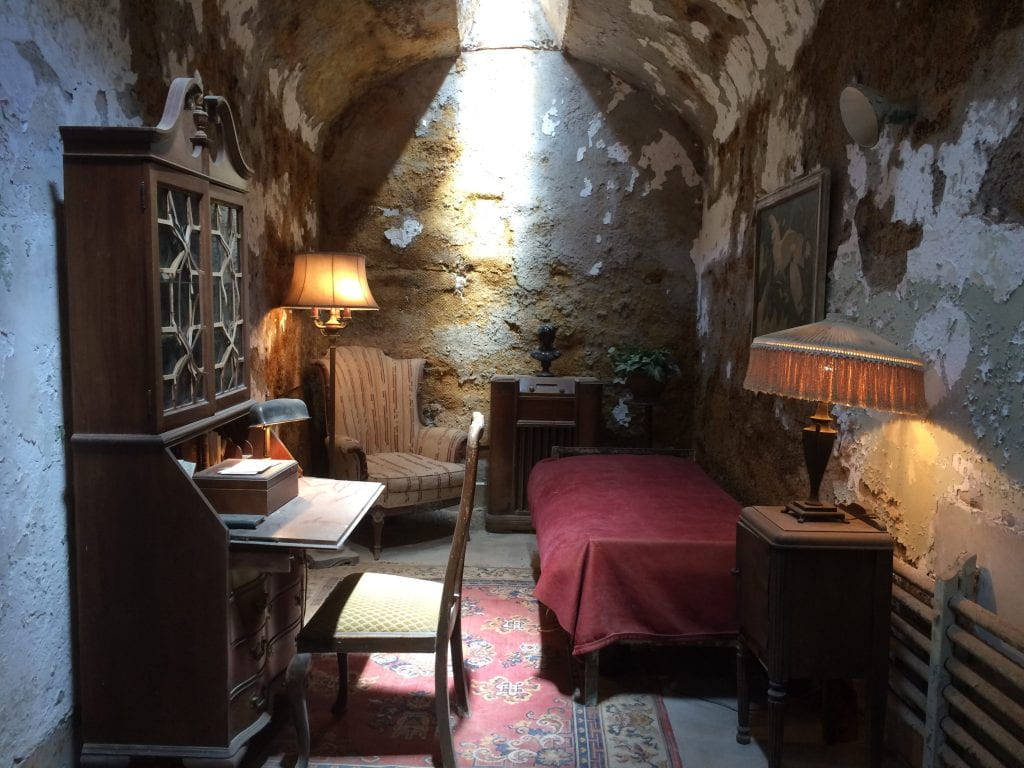
Back to the idea of humanities, digital or otherwise: the museum used data about incarceration rates to make this cool infographic/sculpture in the prison yard. I thought it was a very effective and creative way of visualizing the data set.
 Back at the conference, my first talk was a digital showcase on the Black Gospel Music Restoration Project. I told the assembled crowd of attendees – which, because this was the sole presentation in that time slot for the day, was almost every person at the conference! – about the BGMRP, how it came into existence, and what kinds of research areas a digital humanist might find buried in the collection. Afterward, I got lots of nice feedback and some very interesting ideas about how to make the collection more useful to scholars. One idea that was proposed more than once was to provide transcriptions of the lyrics for songs in the collection, something that would allow DHers to run data analysis on recurring words, grammatical structure, use of metaphor/simile/allusion, etc. This could be a really cool Phase II or III for the project and I was definitely interested in hearing what folks from across the country had to say about one of our highest profile projects.
Back at the conference, my first talk was a digital showcase on the Black Gospel Music Restoration Project. I told the assembled crowd of attendees – which, because this was the sole presentation in that time slot for the day, was almost every person at the conference! – about the BGMRP, how it came into existence, and what kinds of research areas a digital humanist might find buried in the collection. Afterward, I got lots of nice feedback and some very interesting ideas about how to make the collection more useful to scholars. One idea that was proposed more than once was to provide transcriptions of the lyrics for songs in the collection, something that would allow DHers to run data analysis on recurring words, grammatical structure, use of metaphor/simile/allusion, etc. This could be a really cool Phase II or III for the project and I was definitely interested in hearing what folks from across the country had to say about one of our highest profile projects.
I was so jazzed about the presentation that I address it – and one of the big reasons to live in a city other than Waco – in this next video!
I mean, seriously: have you people ever HAD Dunkin’s iced coffee?
My next presentation was a long paper on “How to Keep the ‘Humanity’ in Digital Humanities Social Media.” I basically ran down some ideas about finding a voice for your collections, looking into the different social media platforms for the right fit, and then an overview of the ways we’re using social media to promote the Baylor University Libraries Digital Collections. It was another successful presentation, IMHO, and prompted an appropriate amount of laughter when I told them we used this blog to promote our School of Music Programs by writing an open letter to an actor from “The Walking Dead.” My observations, in video form!
Oh, and my presentation took place in a room with this view:
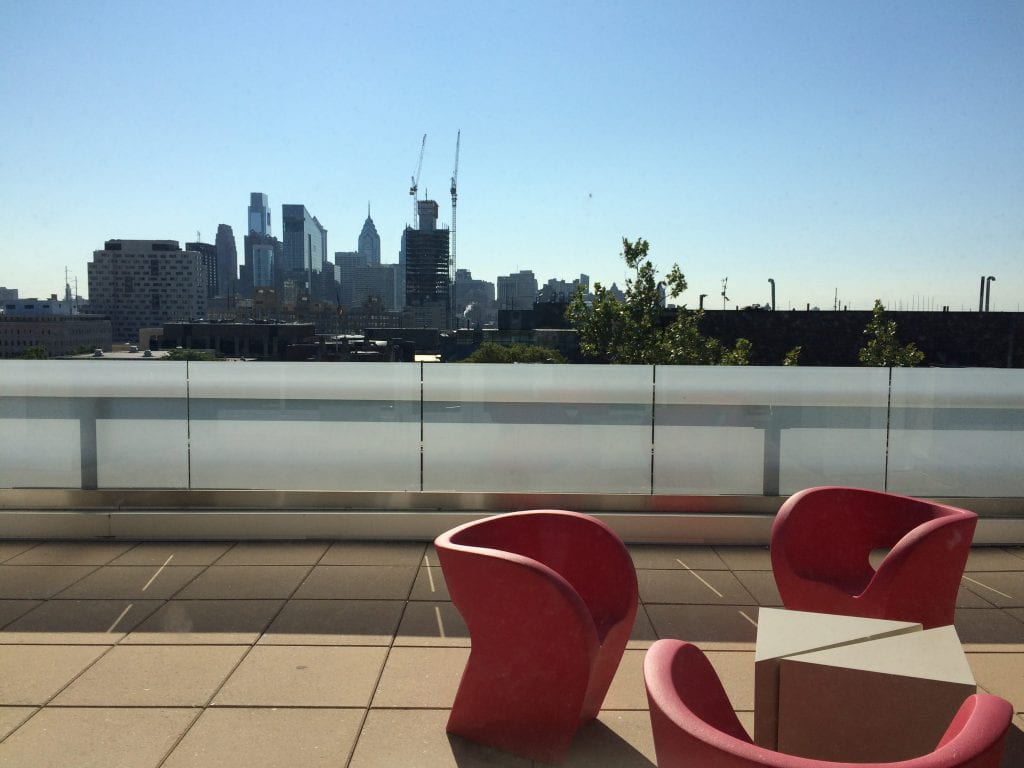
Not too shabby!
I’ll close this post by saying that attending this conference was enormously helpful from a content creator’s perspective because it gave me some great insights into how scholars, faculty and other users are utilizing the kinds of resources we put onto the web, and it gave me great ideas for how to further enhance our collections so that they’re as useful, findable and impactful as possible. And lastly, it gave me a great quote from keynote speaker Dr. Miriam Posner of UCLA, which I’ll present here as one of those “unrelated image/quote/speaker” memes, because I love them.
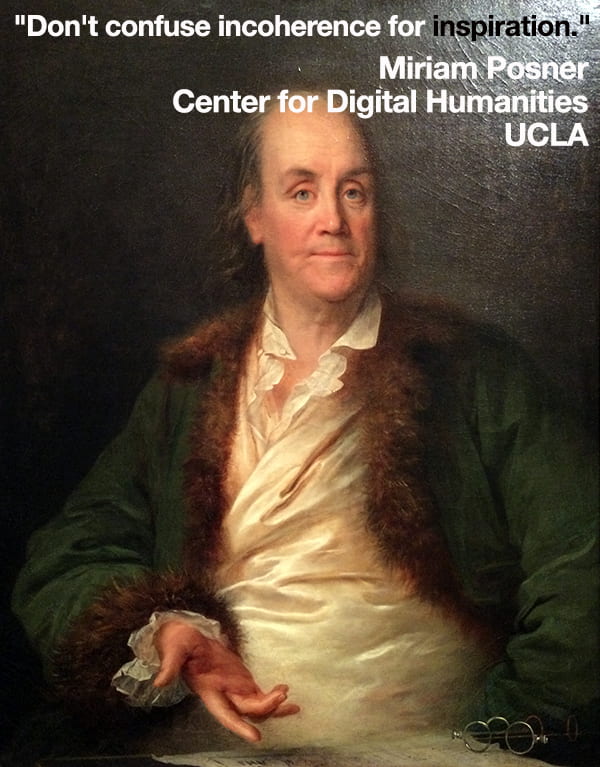 And in case you’re thinking, after all that, that all I did in Philadelphia was eat cheesesteaks and visit museums, here’s pictorial evidence of me talking to a crowd, courtesy Amelia Longo, via Twitter:
And in case you’re thinking, after all that, that all I did in Philadelphia was eat cheesesteaks and visit museums, here’s pictorial evidence of me talking to a crowd, courtesy Amelia Longo, via Twitter:
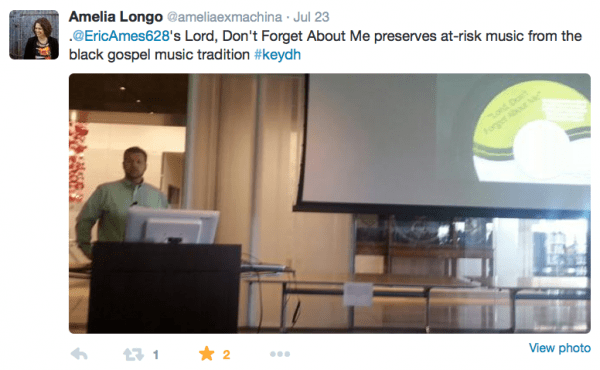 Oh, and for the record: Geno’s Cheesesteaks 4 life.
Oh, and for the record: Geno’s Cheesesteaks 4 life.
The Keystone Digital Humanities Conference website has a full list of the speakers and attendees for your consideration. To see all the Twitter backchatter, search for #keydh. The portrait of sassy Ben Franklin is from the collection at the Philadelphia Museum of Art, a.k.a. the place with the Rocky steps.


